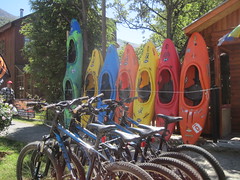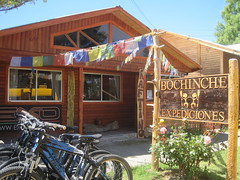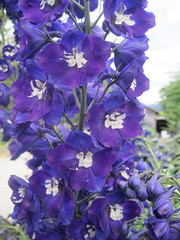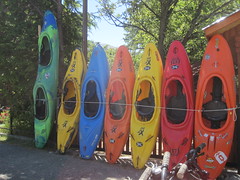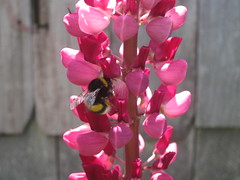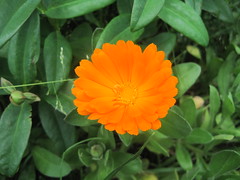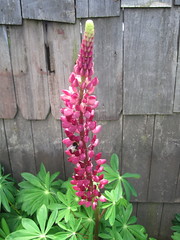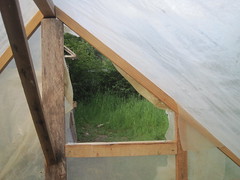I have made several trips away from Futaleufú in the two and a half months I have lived here so far. Once to Palena for a meeting of the regional English Network (and what an interesting time Phoebe and I had trying to get back from Palena to Futa on a Saturday). Once to Esquel, Argentina, to get away to a city over a long weekend. And twice to Chaitén, to visit Kristin the volunteer teacher there and for a Foundation meeting.
Chaitén is a coastal town on the Gulf of Corcovado, across from the island of Chiloé. It is about a 3 1/2 hour bus ride from Futaleufú or Palena which lie to the west near the border with Argentina. Chaitén is engulfed in lush green rainforest-like flora and a gorgeous landscape. The town is also covered in quite a lot of volcanic ash and about half the houses are abandoned– either ruined or buried in ash– due to the eruption of Volcán Chaitén in May of 2008.
Chaitén is a really gorgeous place, with beautiful rural areas (the campo) just out of town, the famous hot springs or termas of El Amarillo 20 minutes away, the controversial but certainly amazing Parque Pumalín (a large private land reserve and park owned by an American) very close by, and of course an active volcano on the landscape. I was lucky to get to take a trip to the campo with my friend Javier and also to visit the wonderfully hot termas on a cool rainy day.
At the same time, the abandoned houses can be a bit dispiriting, and it is no doubt that the volcanic eruption was a harsh blow for the town. Chaitén’s current population is less than half what it was prior to the eruption, and while the town is rebuilding, it is a slow process. But having visited the town, I can see why its inhabitants are committed to living in and rebuilding Chaitén.
I really enjoyed a walk on the beach in Chaitén, accompanied by two canine friends I made the morning that I left. The beach is extensive and is made up of a mix of sand, ash and rocks. During the days of the volcanic eruption, the Río Blanco, the river that passes through Chaitén, overflowed and changed course, flooding the town and carrying in its rushing waters tons of ash and refuse which it deposited on the coast. For this reason, the beach is now considerably higher in elevation and wider than it previously was. (This is actually why ferries like the one I arrived on in February cannot reach the shore during low tide.) It took me 10 minutes to walk across the beach to the shore.
On the bus ride on my way back from Chaitén, it snowed for the first time this year (quite early really as it was only March). It was a really cool addition to the beautiful landscape between Chaitén and Futa, and a nice atmosphere for a nap and some quiet reflection.
* * *
P.S. There are cows grazing in the plaza in Chaitén. I don’t know who they belong to, but they are there and they make no apologies for it.








